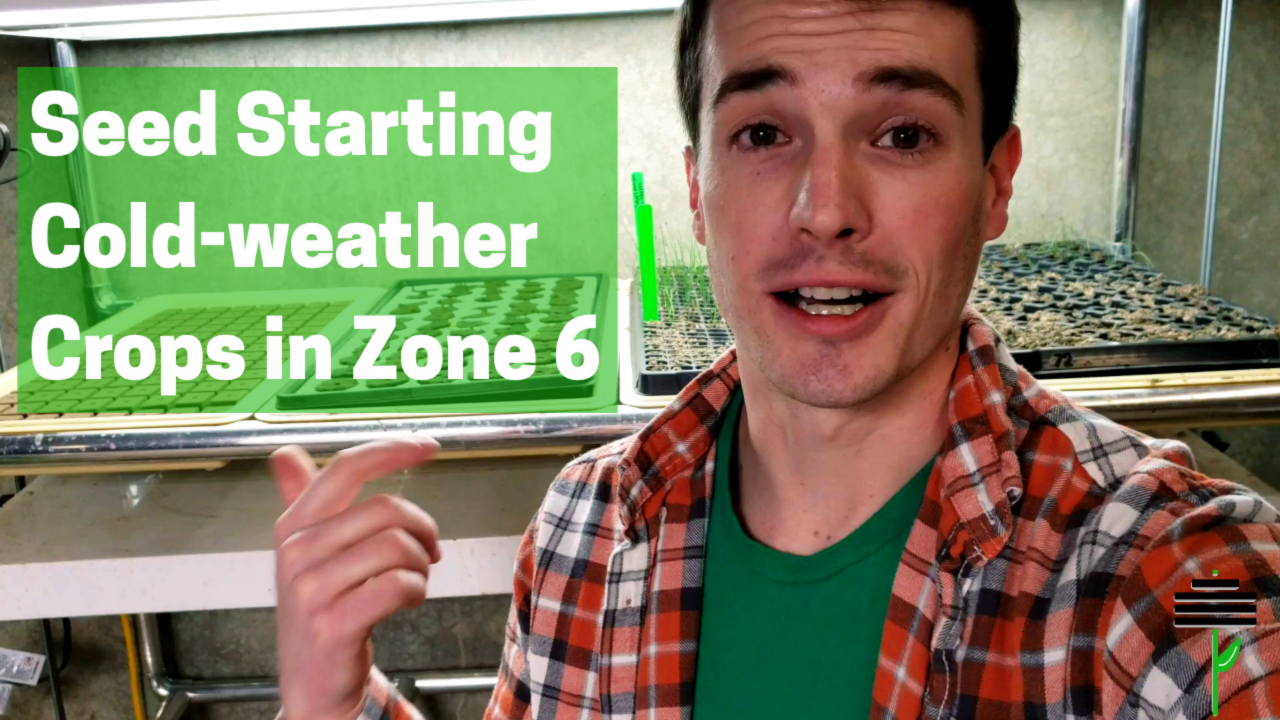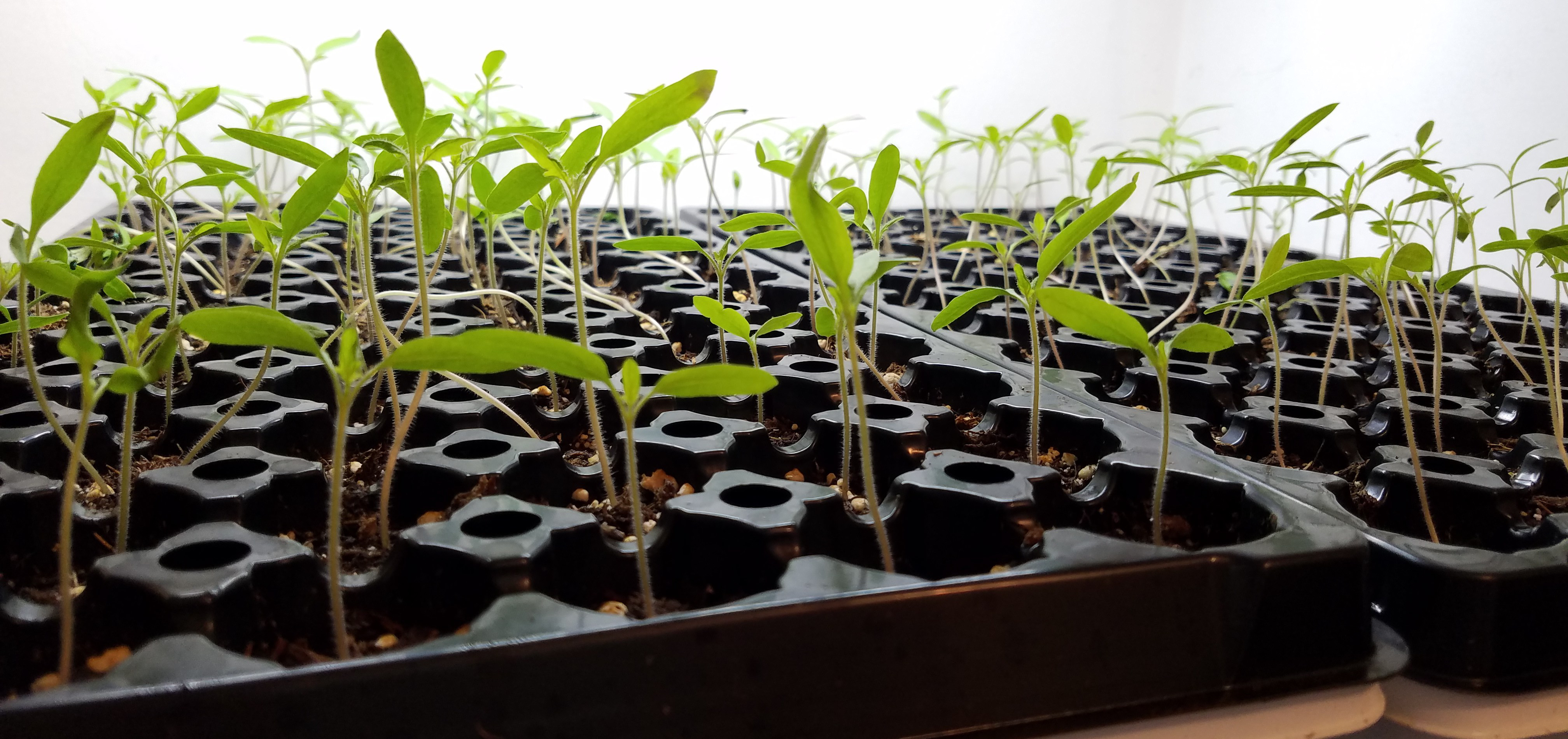
It’s the end of February, and it’s still a little early to get most seeds started here in Ohio. Last year I made the mistake of starting my tomatoes & peppers extremely early with the thought that they would develop more fully & we would be blessed with an early & abundant harvest of Tomatoes, Jalapeños, & Habaneros. In reality, this just led to the seedlings becoming root-bound in the trays, and forced me to do more work than necessary by transplanting them up into larger pots before transplanting out into Root Pouches in the spring once the threat of frost had passed.

So the moral of the story is – don’t plant your Tomatoes & Peppers just yet! This blog will walk you through the crops that are safe to plant at this time of the year if you’re in zones 5-7 or so.
You can also check out the full Part 1 of the YouTube video, if you prefer to follow along that way, but I will cover most of what I discuss in the video, plus I feel I have more opportunity to elaborate on the pieces that I may have missed in the video.
Cold-Weather Seeds I’m Starting Now
- Arugula – Arugula is a cold-hardy crop that can tolerate a light amount of frost, plus it’s fairly quick-growing. I chose to grow Arugula because it adds a nice spicy component to salads, sandwiches, or burgers. It’s also important to note that Arugula attracts a TON of pests like flea beetles and cabbage worms / moths. This is a great reason to get Arugula out in the garden early while it’s still cold and the pests are hiding away for winter.
- Broccoli – I didn’t think that I would be growing broccoli this year because of the stomach issues I’ve had, but I have been given the all-clear to add more fiber into my diet as long as it doesn’t bother me. And my garden isn’t all about me since I’m growing for a CSA, so I had to take that into consideration as well. Broccoli was a huge hit last year, and the Early Green Broccoli variety should give us a super strong start to the CropBox. Broccoli is frost-tolerant as well and the cooler weather actually helps to enhance the sweetness – so get those broccoli plants started!
- Lettuce – What is a spring garden without lettuce? This year I’ll be growing two fan-favorites from years past: Buttercrunch & Concept Lettuce, plus a new one that I’ve been hearing about from every grower at every trade show: Salanova Lettuce from Johnny’s. The amazing thing about Salanova is that you can treat it as a hybrid lettuce and harvest it as either head lettuce or leaf lettuce – meaning you can get up to 3-4 harvests from a single planting! It’s important to note that if you have a rainy season (like last spring in Ohio), or if you maintain an overly moist environment in the lettuce, you will almost certainly attract slugs and/or snails – I found this out the hard way last year, but will be combatting that problem with an organic solution of wool pellets. Last year I also made the mistake of planting 288 heads of lettuce at once – this year I’m taking advantage of succession planting to ensure that we maintain a steady harvest of the staple rotational crops like lettuce, spinach, and other leafy greens. I’ll go into more detail on succession planting later in this blog and in more depth in a separate blog as well.
- Onions – Typically I prefer to plant onion bulbs or onion sets, but I haven’t had much luck with growing onions from seed, so I figured I would give it another shot this year. I started off with Evergreen Onions which are a green onions variety, but I may also plant some Red Burgundy seeds as well (those are a bulb variety, not used for green onions). Onions have a looong growing season, so if you really want to grow them from seed, get those seeds a-going!
- Spinach – As with Lettuce, what is a spring garden without Spinach! My variety of choice is Gurney’s Goliath Spinach because it’ll give you leaves the size of your hands and it provides abundantly. Like all of these plant varieties, mature Spinach is extremely cold-tolerant and, depending on the variety, can withstand temperatures down to 20ºF.
Seed Tray Selection & Succession Planting
This section is not a full-blown blog about Seed Tray Selection & Succession Planting, but it should help serve as a general guide. As overzealous gardeners, it is our instinct to fill the seed trays completely full of seeds – not realizing that we will end up with 72 or 288 heads of lettuce all needing harvested at one time!
When we plant our seeds, we need to ask a few questions:
- How many people are you growing for? This will give you an idea of what size of trays to start your plants in. I’m growing greens in 288-cell trays because I am planning to provide fresh veggies & herbs to 10-25 people. When I plant in these 288-cell trays, that will help the root systems form quicker in the smaller-sized plug and will allow me to pack more plants into a 10×20 tray-sized area. When I planted my lettuce I thought about the timeframes for harvesting and ended up planting 48 heads of lettuce & 60 plugs with Arugula. This left half of the tray to be planted up in another 2 weeks to ensure that we have staggered & continuous harvests of Lettuce, Arugula, Spinach, and other leafy greens or quick-turn crops like Radish or herbs.
- How much space do I have in my Seed Starting area & in my Garden? Every gardener in the world overestimates what they can handle – until they learn the hard way like I have over the past few seasons. This year I’m dialed in with a plan that I created wayyy ahead of time to ensure that I wouldn’t over-plant. Last year I found myself drowning in tomatoes & hot peppers, as per usual. This year, it will be drowning in greens, beans, cucumbers, melons, sweet, corns, and tomatoes, potatoes, & peppers. My Plan assures that we’ve got the space, but to really over-deliver this year, and to build some street cred, I’m also going to buy a plot at our local community gardens and plug it full of watermelons, cantaloupe, sweet corn & potatoes galore!
Supplies I Use for Seed Starting
- Make America Garden Again t-shirt (necessity for all gardeners) – https://gardening4gains.com/product/make-america-garden-again/
- Seeds
- Concept Lettuce – from Seeds of Change
- Goliath Spinach – from Gurney’s Seed & Nursery Co.
- Evergreen Onions – from Gurney’s Seed & Nursery Co.
- Early Green Broccoli – from Seeds of Change
- Buttercrunch Lettuce – from Gurney’s Seed & Nursery Co.
- Salanova Green Sweet Crisp Lettuce – from Johnny’s Seeds
- Arugula – from Burpee
- Seed Starting Soil Mix
- Seed Trays
- 288-cell Trays – Remember, only use 288-cell trays if you’re growing for a large amount of people such as a CSA or if you plan on growing for a Farmer’s Market. I like TO Plastics products because they are made using recycled plastics, so you have the added benefit of using a more sustainable product.
- 50-cell and/or 72-cell Plug Trays – If you’re only growing a small garden, these trays will be much more manageable. Small-celled trays require a lot more care and attention to the water levels. Deeper plugs don’t require as much attention and allow the plants to develop more fully before being transplanted out.
- White Trays
- Watering Can
I hope this Blog, Video, & Supply list helps you in your Seed Starting Journey! I will be producing more gardening content throughout the spring, summer, and beyond – so if there’s anything you’re curious about, or want me to dive a little deeper on – let me know & I’ll throw a video together for you!
Hang on for a few more weeks & the weather will start to turn in our favor. Within 4-8 weeks you will be planting your onions, lettuce, arugula, spinach, and broccoli outdoors – and then the real challenges & fun begin – Happy Gardening!
As an Amazon Associate I earn from qualifying purchases.






